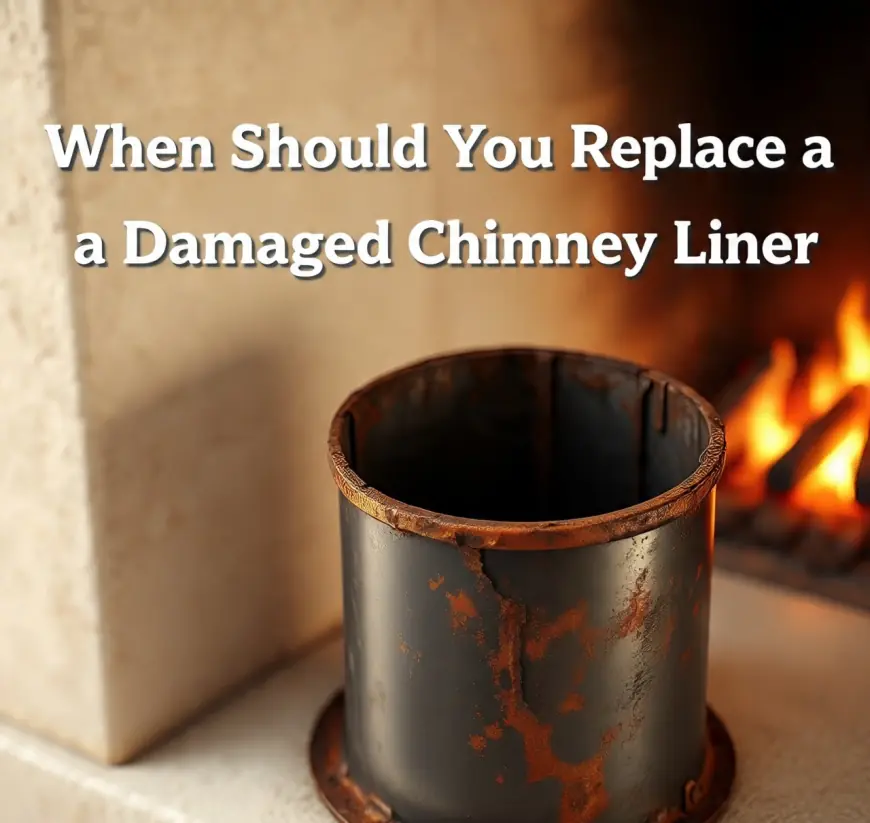When Should You Replace a Damaged Chimney Liner
A chimney liner safely directs smoke and gases out, protects chimney walls, improves efficiency, and reduces the risk of fire and structural damage.

Imagine this: It’s a chilly evening, the scent of burning wood fills your living room, and your fireplace glows with comfort. But behind that cozy scene, your chimney liner could be hiding cracks or damage that might put your home at risk. Most people don’t think about their chimney liner until there’s a problem, but knowing when to replace it is crucial for your family’s safety and peace of mind. In this guide, I’ll break down the signs, costs, and even what to do if you need emergency service. Let’s get real about when should you replace a damaged chimney liner and keep your hearth safe and happy.
Key Features: What Makes Chimney Liners So Important?
Before diving into when to swap out a damaged liner, let’s talk about why it matters in the first place. The liner is like the unseen hero inside your chimney—it shields the brickwork from harsh smoke, intense heat, and all those messy byproducts that fires create. Without a strong liner, your chimney’s bricks and mortar would wear down much faster. Even worse, a faulty liner can let dangerous gases like carbon monoxide sneak into your home.
Here’s a quick table to give you an idea of a liner’s main duties and the warning signs you might notice when it’s in trouble:
| Chimney Liner Role | What Could Go Wrong | How to Spot Trouble |
|---|---|---|
| Protects chimney walls | Cracks or holes develop | Debris or flakes in fireplace |
| Directs smoke out safely | Blockages or warping | Smoke backs up indoors |
| Prevents heat transfer | Liner deteriorates or shifts | Unusual odors or visible damage |
| Blocks toxic gases | Gaps let fumes escape | Headaches or dizziness after fires |
Safety First: Don’t Gamble with Chimney Damage
The biggest reason to replace a damaged chimney liner is safety, plain and simple. A cracked or worn liner isn’t just a minor inconvenience; it’s a hazard that can lead to chimney fires or let dangerous gases seep into your living space. If you ever notice bits of tile or metal in the fireplace, or if smoke seems to be coming into the room instead of going up and out, those are big red flags.
Another giveaway is strange smells, especially when you’re not even using the fireplace. That could mean moisture and creosote are building up where they shouldn’t, which can quickly turn into a major risk. If you ever feel dizzy or lightheaded after using your fireplace, stop and get your chimney checked immediately. It’s always better to be overly cautious than to wait and hope for the best.
“A damaged chimney liner is like a cracked shield—it may look fine from the outside, but it can’t protect you when it matters most.”
The Real Cost: Investing in Your Home’s Safety
Let’s be honest—no one loves surprise expenses, especially when it comes to home maintenance. Replacing a chimney liner can feel like a big hit to your wallet, but putting it off almost always ends up costing more in the long run. If ignored, a bad liner can cause expensive water damage, ruin your chimney, or even lead to a house fire.
The actual price depends on the size of your chimney, the type of liner you need, and how tricky it is to access. Metal liners (usually stainless steel) are common and, while not the cheapest option, they last for years and offer great protection. Clay liners are more old-school and can be pricier to repair or replace. Think of replacing your liner as protecting the investment you’ve already made in your home—nothing is more valuable than your family’s safety.
| Type of Liner | Estimated Lifespan | Replacement Cost (Approx.) |
|---|---|---|
| Stainless Steel | 15–20 years | $1,500 – $4,000 |
| Clay Tile | Up to 50 years | $2,000 – $5,000 |
| Ceramic or Cast-in-Place | 30–50 years | $4,000 – $7,000 |
Emergency Service: When “Later” Isn’t an Option
Sometimes, you don’t have the luxury of waiting. If you spot flames coming from your chimney, or if a routine cleaning reveals major cracks or holes, call a professional right away. Some chimney companies offer emergency service and can inspect or even temporarily fix the problem until a full replacement can be scheduled. Don’t light another fire until you get the all-clear—your safety is worth more than a night by the fireplace.
Also, if you just moved into a new place and don’t know the last time the chimney was checked, it’s smart to have it inspected. A quick look today could save you a world of trouble (and money) down the road.
Wrapping Up: Don’t Wait for Trouble to Find You
Replacing a damaged chimney liner isn’t the most glamorous home project, but it’s one that pays off every time you enjoy a fire without worry. Keep an eye out for the warning signs we’ve covered, listen to your gut if something feels “off,” and don’t hesitate to call in the experts if you’re unsure. Your home—and everyone in it—deserves to be safe, warm, and protected, no matter how cold it gets outside.
Read More: Chimney Sweep
What's Your Reaction?
 Like
0
Like
0
 Dislike
0
Dislike
0
 Love
0
Love
0
 Funny
0
Funny
0
 Angry
0
Angry
0
 Sad
0
Sad
0
 Wow
0
Wow
0


















































